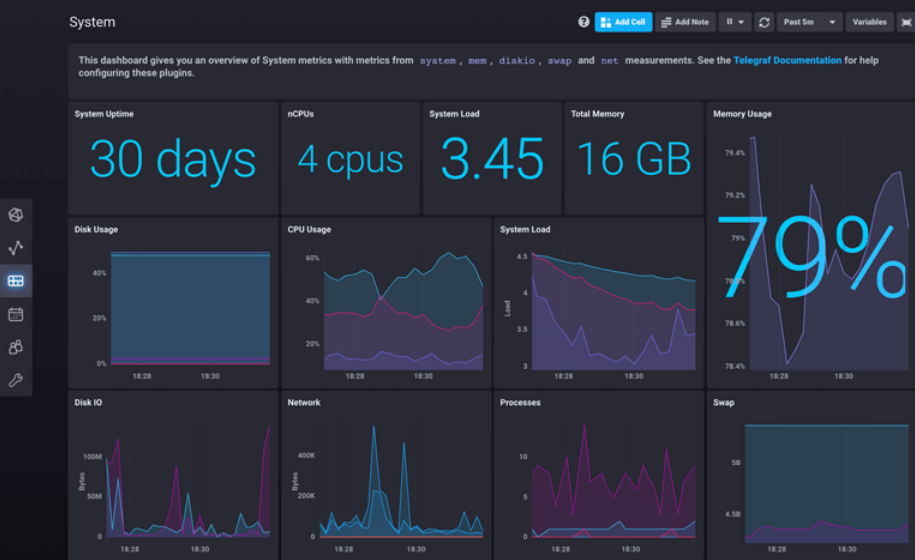 BIG DATA
BIG DATA
 BIG DATA
BIG DATA
 BIG DATA
BIG DATA
InfluxData Inc. announced some useful updates today that should help developers to build applications powered by the InfluxDB database more easily.
The open-source InfluxDB is a time-series database that’s optimized for information processed chronologically, hence the name. Certain kinds of data need to be arranged in the exact order created. For example, the heat readings from an industrial sensor should be chronological so users can see exactly how the temperature level oscillates within a piece of equipment over time.
This kind of context can also be useful when monitoring application performance or tracking certain kinds of business metrics, such as how a company’s stock price fluctuates.
The InfluxDB database is therefore perfectly suited for use cases such as the “internet of things” and application monitoring. The system can handle millions of data operations per second and is designed to be easy to deploy.
At InfluxDays North America 2021 Virtual Experience, InfluxData said the new features being announced today are aimed at making it easier for developers to collaborate and build real-time applications.
For example, the company has created three new ways for developers to write Flux queries, so they can choose the development style that works best. Flux is the data scripting and query language used with InfluxDB, and it’s highly optimized for extract, transact and load or ETL processes as well as monitoring and alerting.
Enhancements to InfluxDB Notebooks make it possible to quickly setup alerts, build new tasks or write a Flux script, so developers can now get started on creating new applications without leaving their web browser.
Second, InfluxData has announced an auto-generated Flux queries feature. Developers can compose Flux queries that can be included in client code and automatically recreated in more than 10 common programming languages.
Third, the company has announced Flux Visual Studio Code Extension, which makes it possible to use Flux within Microsoft’s Visual Studio Code editor tool. Now, developers can use that environment to write Flux scripts, query InfluxDB, create Flux tasks and manage buckets in one place. One of the benefits of the Flux Visual Studio Code Extension is features such as syntax checking and contextual autocomplete, which help developers to stay focused on the code they’re writing.
InfluxData Vice President of Products Tim Hall said the updates are all about meeting developers “where they are” and ensuring they can work with their chose tools to build time-series applications.
“With these updates, InfluxDB can better help developers unlock the value of time-stamped data through a consistent, intuitive, easy-to-use experience,” Hall said.
That’s not all, though, as InfluxData further added to the capabilities of InfluxDB Cloud, the cloud-native version of InfluxDB that scales elastically to meet user’s resource requirements.
Within InfluxDB Cloud there’s a new explicit-schema option. This does what the name suggests, allowing developers to define explicitly the schema of a bucket within InfluxDB to prevent unwanted changes. The new application programming interface Invocable Scripts make it easy to define parameterized Flux scripts that can be invoked within applications. Finally, there are new integrations with ServiceNow, Alerta and WebEx Teams, making it easier for apps powered by InfluxDB Cloud to send notifications to those platforms.
RedMonk analyst KellyAnn Fitzpatrick welcomed today’s updates, saying they help to provide developers with a more consistent application building experience no matter if they’re doing so on-premises, in the cloud or in both locations at once. “InfluxData’s new capabilities aim to eliminate many of the barriers to application building by creating a more seamless, developer-friendly and productive experience for working with time series data,” she said.
The new capabilities announced for InfluxDB and InfluxDB Cloud are available starting today.
THANK YOU